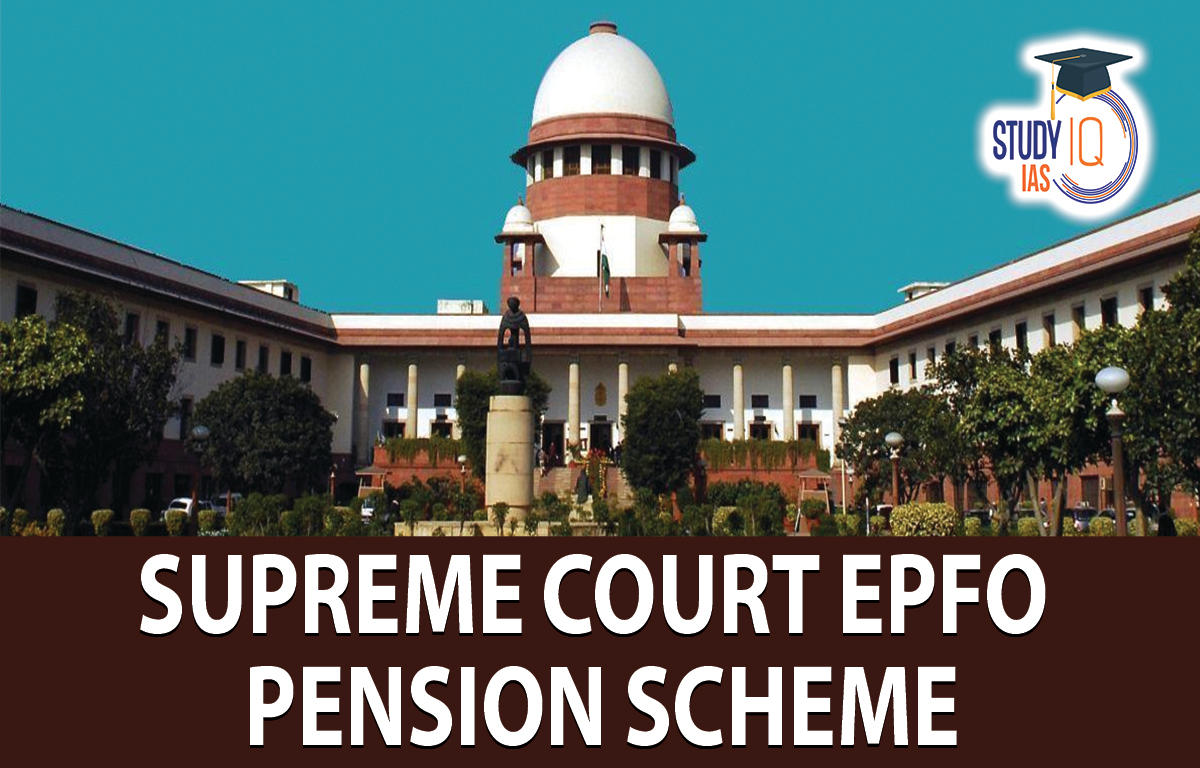Table of Contents
EPFO Pension Scheme 1995
- Employees of various establishments are covered by the Employees’ Provident Funds and Miscellaneous Provisions Act, 1952, which provides for a provident fund account in the name of each employee of a covered establishment.
- In this account, the employee contributes 12 per cent of her/his basic salary and the employer contributes an equal amount.
- Employees’ Pension Scheme, 1995: Through an amendment to the Act in 1995, Section 6A was inserted, to provide pension to employees.
- EPS is administered by the EPFO, aims to provide employees with pension after the age of 58.
- Both the employee and the employer contribute 12% of the employee’s basic salary and dearness allowance to the EPF.
- The employee’s entire part goes to EPF, while the 12% contribution made by the employer is split as 3.67% contribution to EPF and 8.33% contribution to EPS.
- Government of India contributes 1.16 per cent as well for an employee’s pension.
- Employees do not contribute to the pension scheme.

- EPS amendment of August 22, 2014: It raised the pensionable salary cap to ₹ 15,000 a month from ₹ 6,500 a month.
- It allowed members along with their employers to contribute 8.33 per cent of their actual salaries (if it exceeded the cap) towards the EPS.
- It gave all EPS members, as on September 1, 2014, six months to opt for the amended scheme.
- Failing to opt were deemed to have not opted for contribution over the pensionable salary cap and the extra contributions already made to the pension fund were to be diverted to the Provident Fund account of the member, along with interest.
- It required such members to contribute an additional 1.16 per cent of their salary exceeding ₹ 15,000 a month towards the pension fund.
EPFO Pension Scheme Highlight of Supreme Court Verdict
- Supreme Court used its extraordinary powers under Article 142 of the Constitution to allow eligible employees who had not opted for enhanced pension coverage prior to the 2014 amendments, to jointly do so with their employers within the next four months.
- It struck down a requirement in the 2014 amendments that employees who go beyond the salary threshold (of ₹15,000 per month) should contribute monthly to the pension scheme at the rate of 1.16% of their salary.
- It directed that members of the scheme who did not exercise the option for higher pension as provided for in the scheme as it existed before the 2014 amendment, were entitled to exercise the option, jointly with their employers, even under the amended scheme.
- This right was upheld in the R.C. Gupta judgement, which said no cut-off date was envisaged in EPS-1995.
- Relief for Government: Members opting for higher pension would, have to contribute an additional 1.16% on salary exceeding ₹15,000 as a temporary measure for six months, while the government came up with measures to augment its resources.
- Court also recognised the government’s powers to amend the pension scheme prospectively or retrospectively under Section 7 of the Employees’ Provident Funds and Miscellaneous Provisions Act, 1952.
Employees’ Provident Funds (EPF) Scheme
- EPF is a mandatory savings scheme under the Employees’ Provident Funds and Miscellaneous Provisions Act, 1952.
- It is managed under the aegis of Employees’ Provident Fund Organisation (EPFO).
- It covers every establishment in which 20 or more persons are employed (and certain other establishments which may be notified by the Central Government even if they employ less than 20 persons each).
EPFO Pension Scheme: EPFO
- It is a non-constitutional body that promotes employees to save funds for retirement.
























 WhatsApp
WhatsApp